Late in April 2022, our family was finally – after two long years of COVID travel restrictions – able to make the trip to the remote Northeast and visit the project in Kratie province. When we came to Cambodia in 2019 I had planned to take the girls along on field visits regularly but due to the pandemic I ended up doing most field visits on my own and usually under heavy restrictions. It was wonderful to have them come along this time.
We got breakfast on the street near Olympic market while waiting for our van. The ride from Phnom Penh to Kratie town took about 8 hours. From Kratie town to the project site the ride is another 2-4 hours depending on road conditions and the time of year.
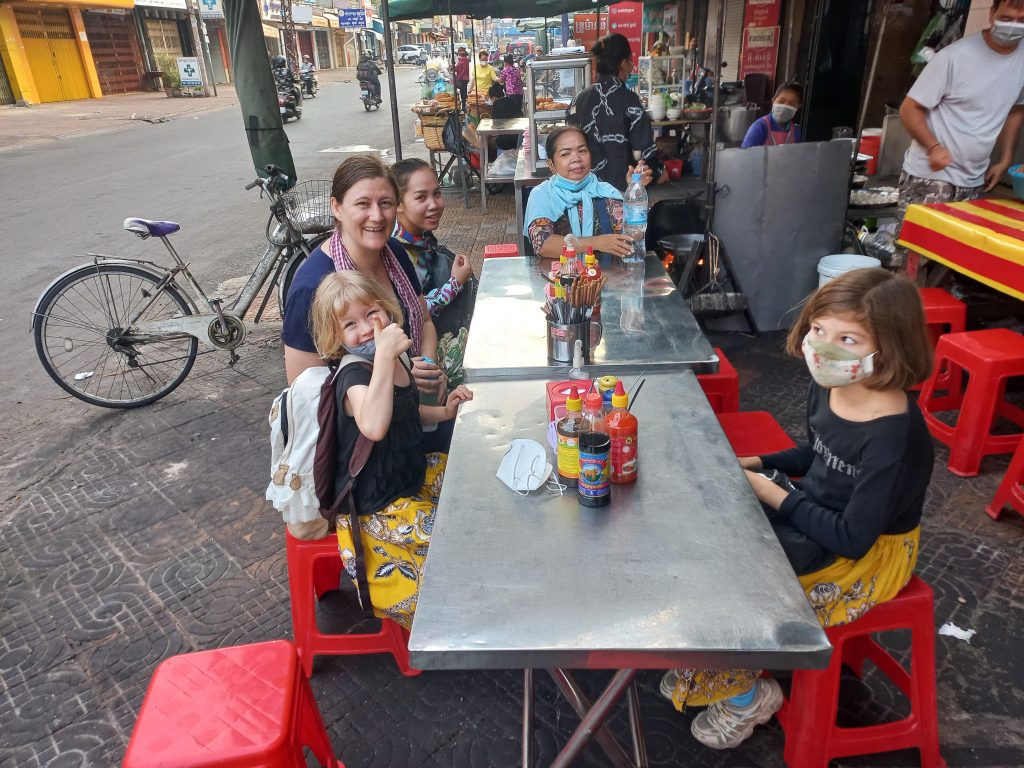
Four of the five poorest provinces in Cambodia are located in the Northeast. Kratie is one of them but the provincial capital, Kratie town, is a hub for ecotourism and has a higher level of development than the rest of the province. Unfortunately development often seems to come with plastic waste.
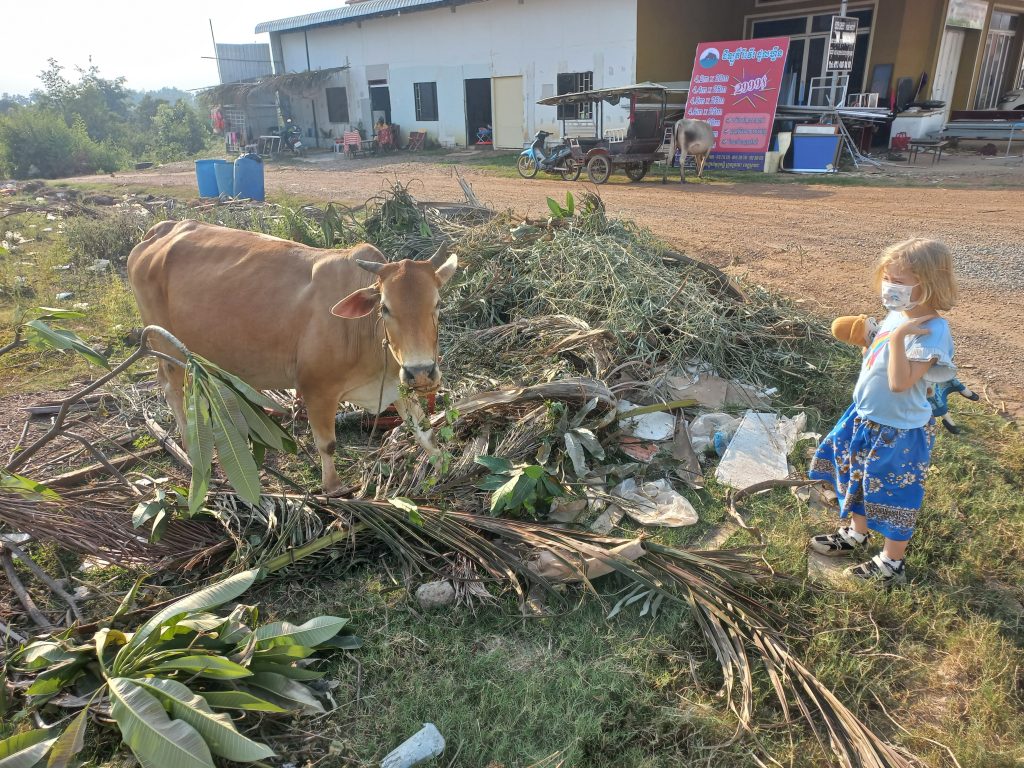
One of my close Khmer friends, Amara, lives in Kratie town with her family. She use to be the Accountant at the MCC Phnom Penh office but moved back to her home province when she got married. Her husband runs a sports club now and she works at the Kratie World Wildlife Fund office.
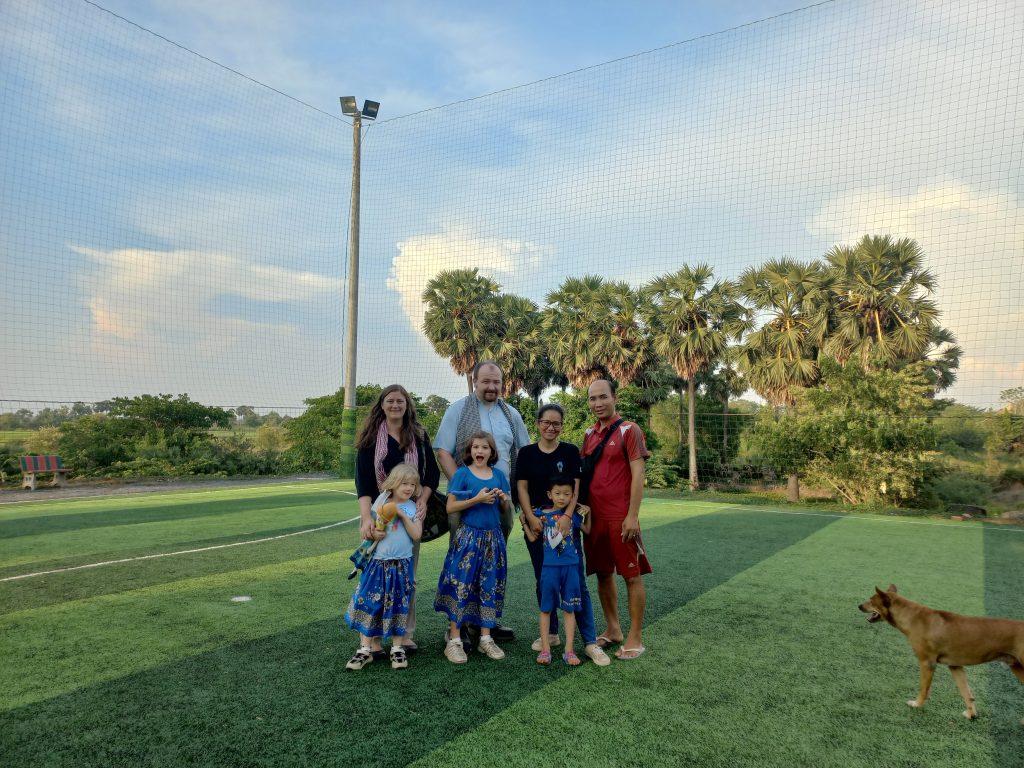
In this photo a single kitty tames three wild human children.
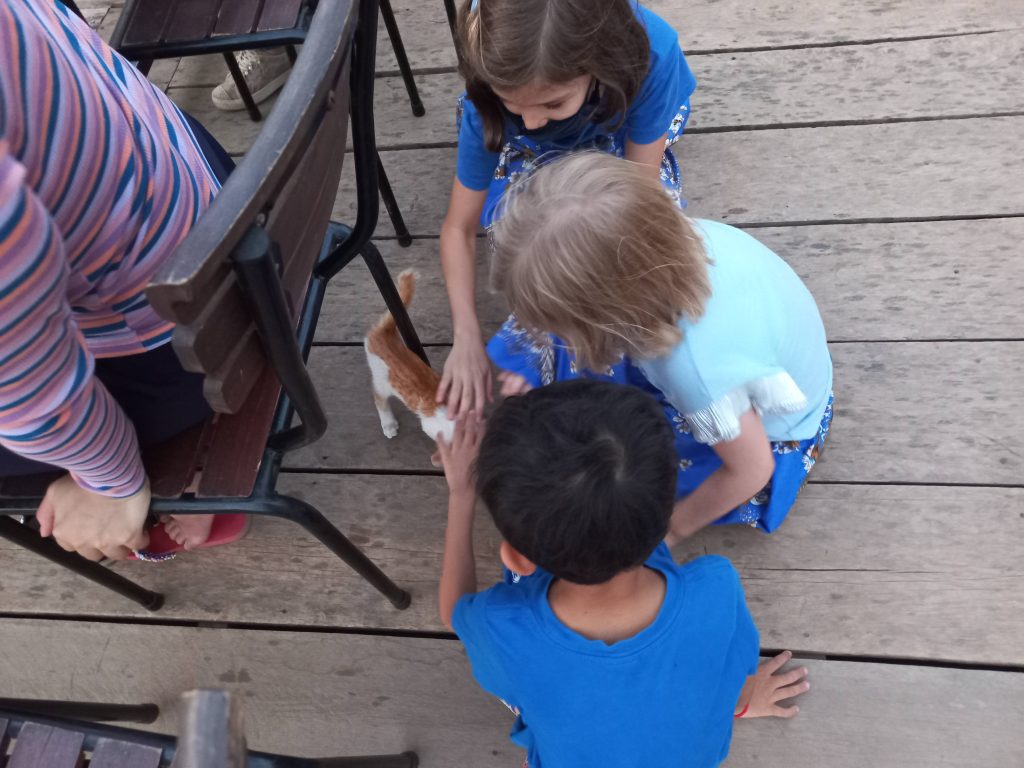
Our girls and Amara’s son playing together on the swings at a restaurant. We didn’t plan for them all to match but it just turned out that way.
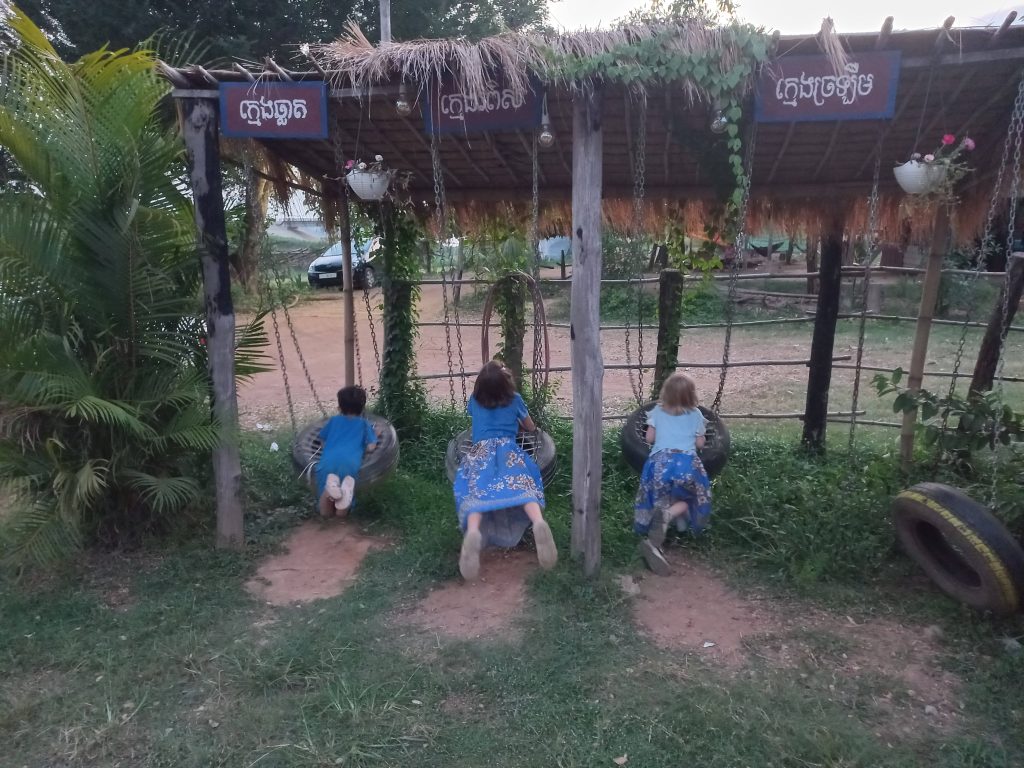
Kratie province is famous for it’s rich forests and diverse ecosystems. In particular, Kratie is known as one of the last habitats for the endangered Irrawaddy river dolphin. There are scattered populations of them across the region but they are declining due to pollution (particularly single use plastic waste), overfishing, and loss of habitat. There are less than one hundred of them in the Mekong river.
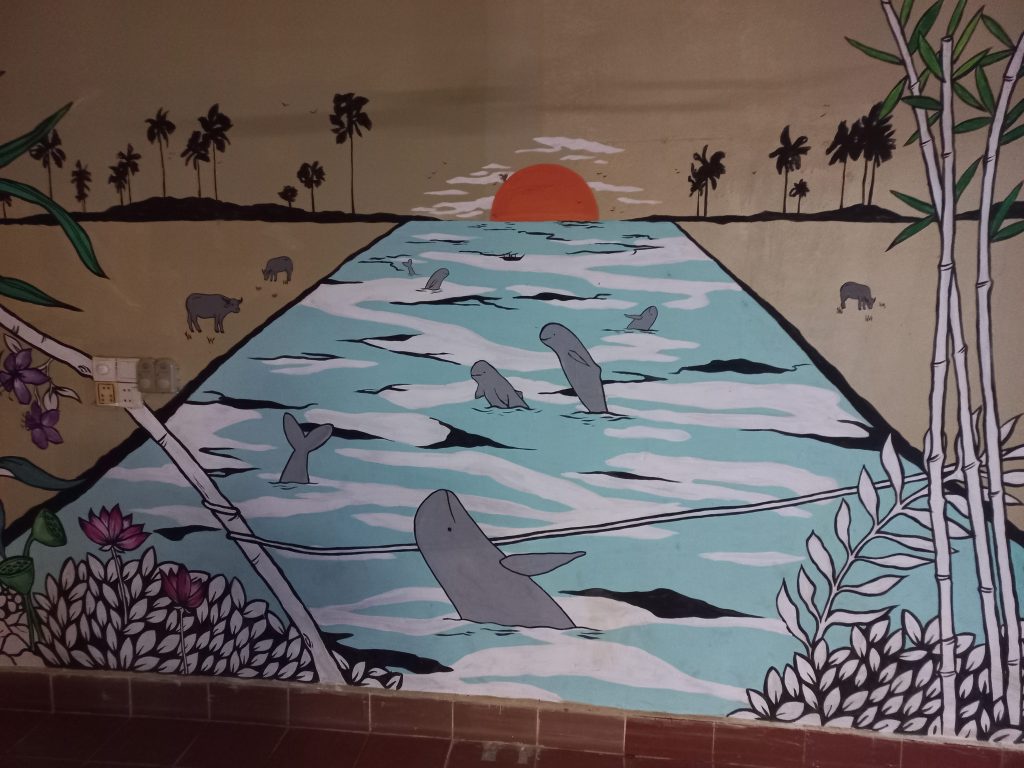
An Irrawaddy river dolphin mural in Kratie town.
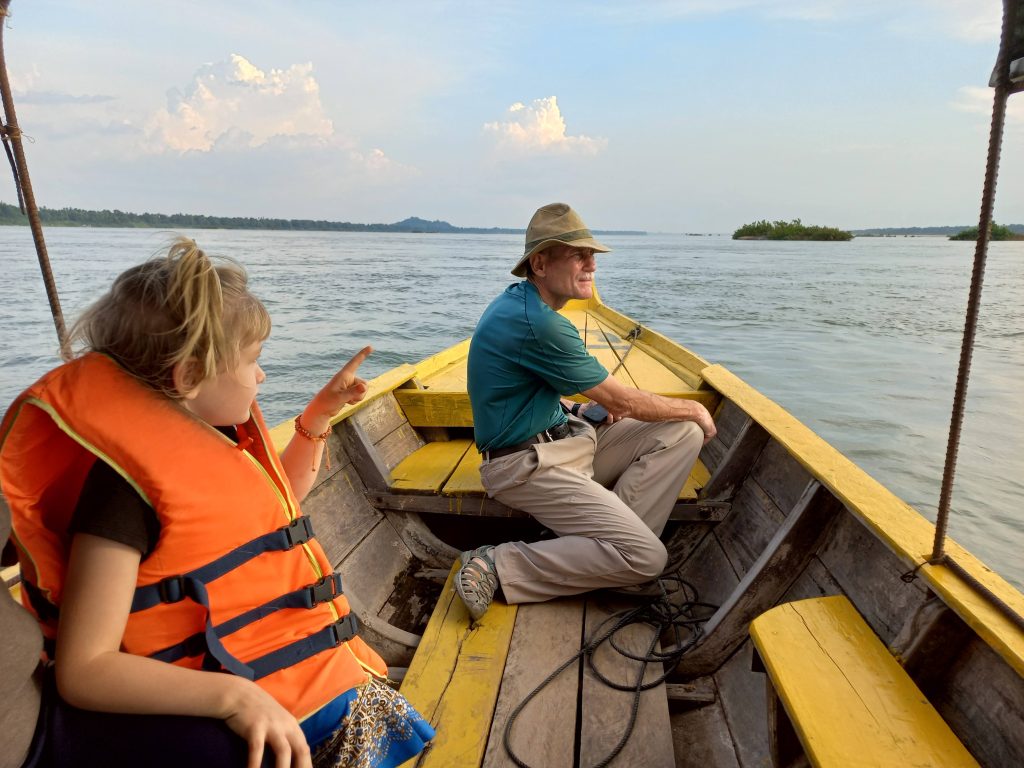
Catherine and Rory looking for dolphins on a boat on the Mekong river.
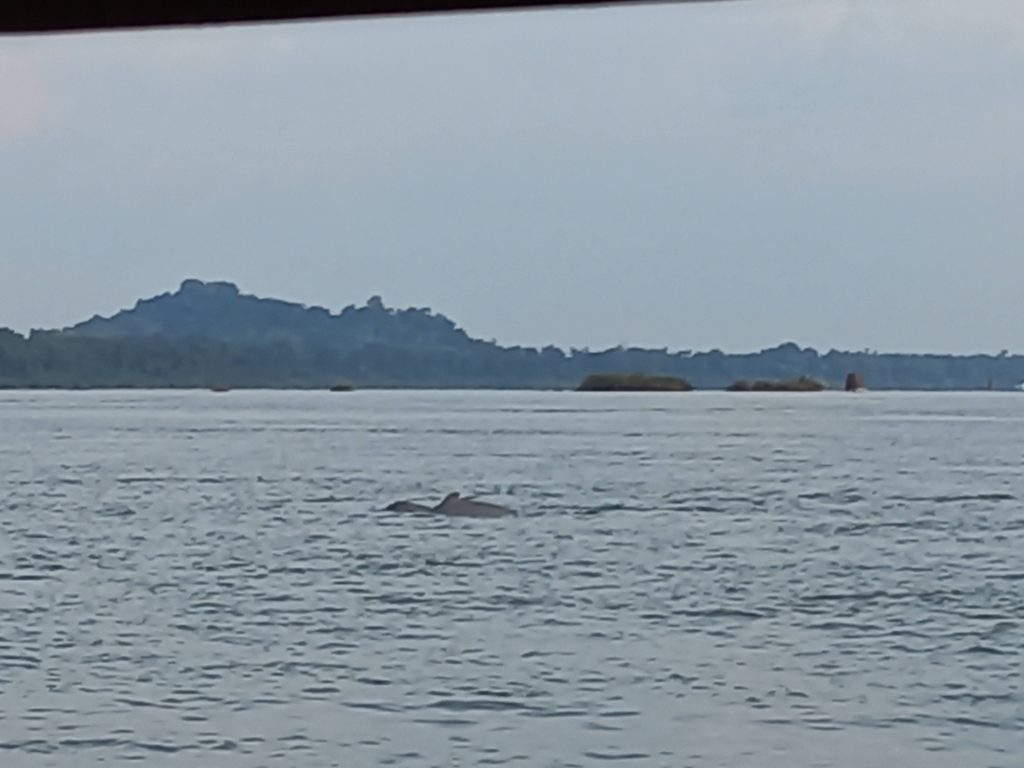
The clearest dolphin sighting photo that I was able to take during our April 2022 visit. I have some better ones from my 2009 visit but, unlike my phone, that camera had a ‘sports mode’ that was fantastic for taking action shots.
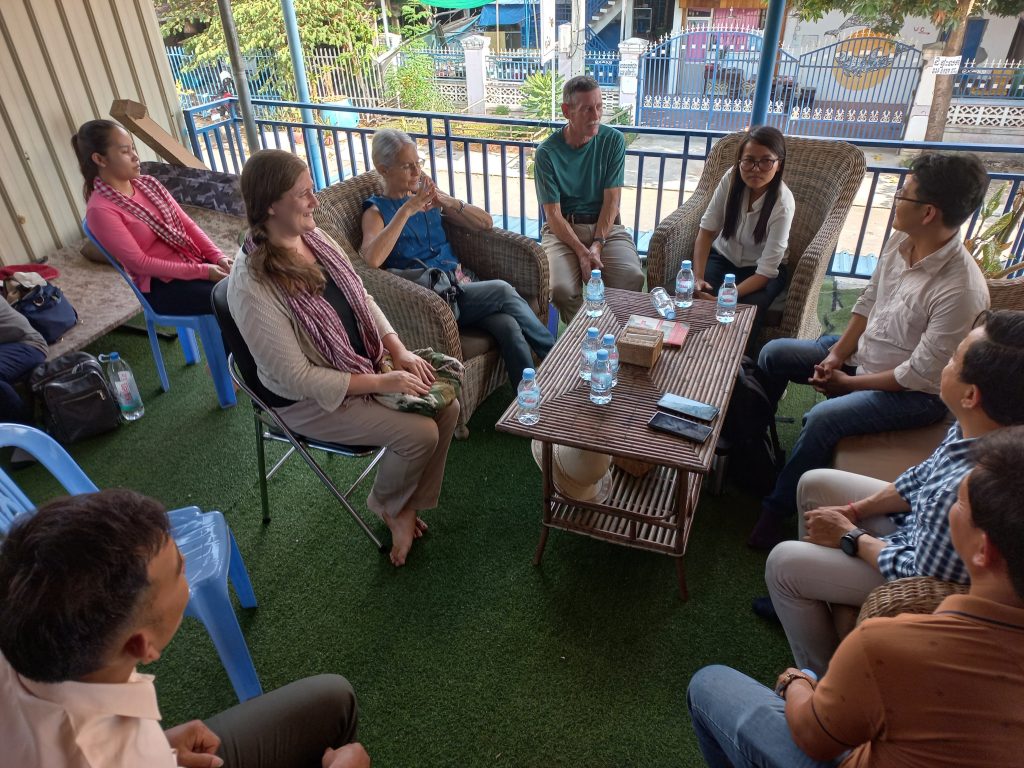
Three way meeting between Mennonite Central Committee, Women Peace Makers, and the Cambodian Rural Development Team at the CRDT office in Kratie town.
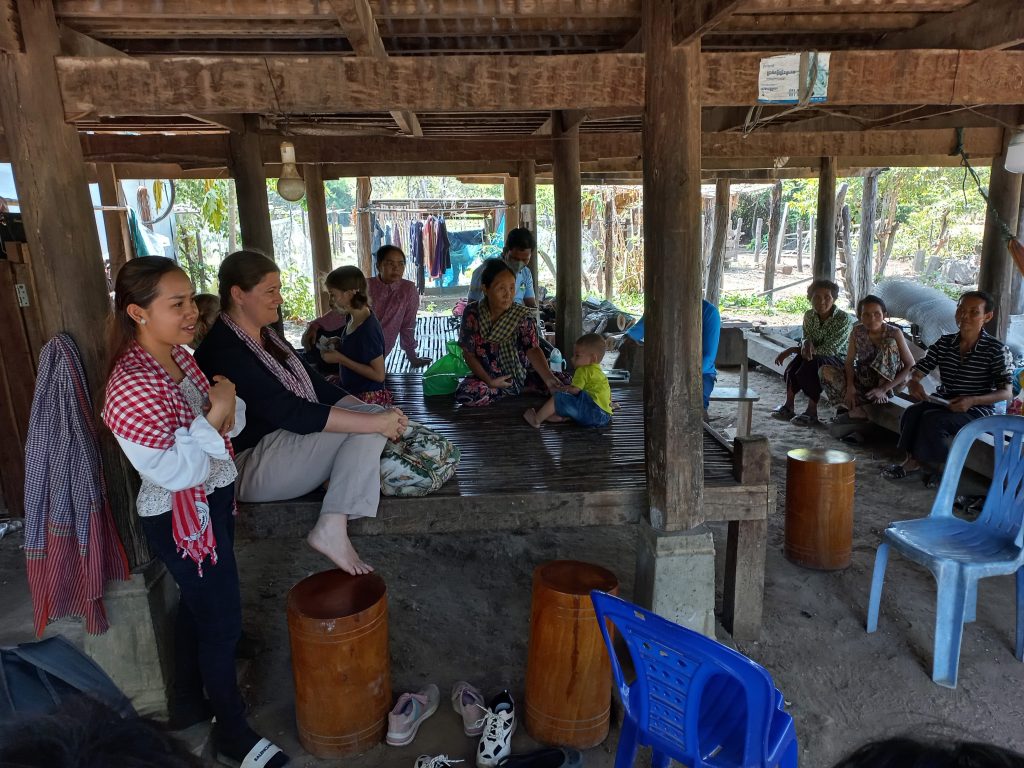
Attending a village vegetable producer group under a farmer’s house in a remote village in Sambour district, Kratie province.
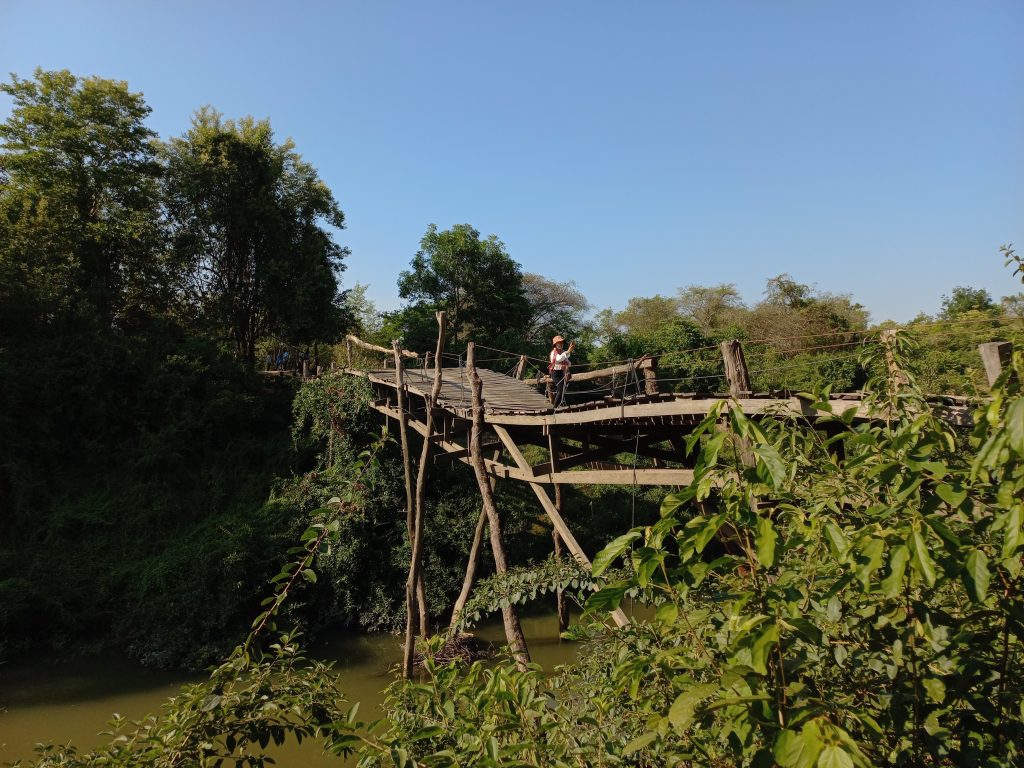
The bridge we had to cross to reach one of the more remote villages on an island upstream on the Mekong river.
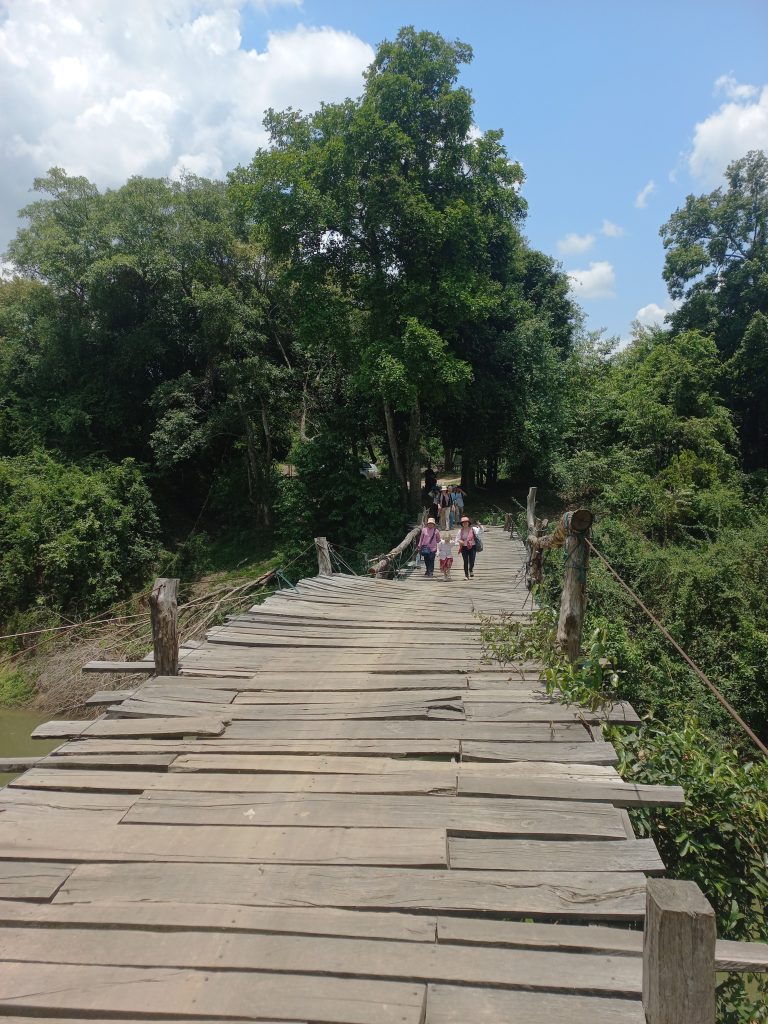
Here’s another photo of the girls crossing the bridge. I often crossed bridges like this during my first term in Prey Veng but the river banks there are not so steep and the height was a bit less intimidating.
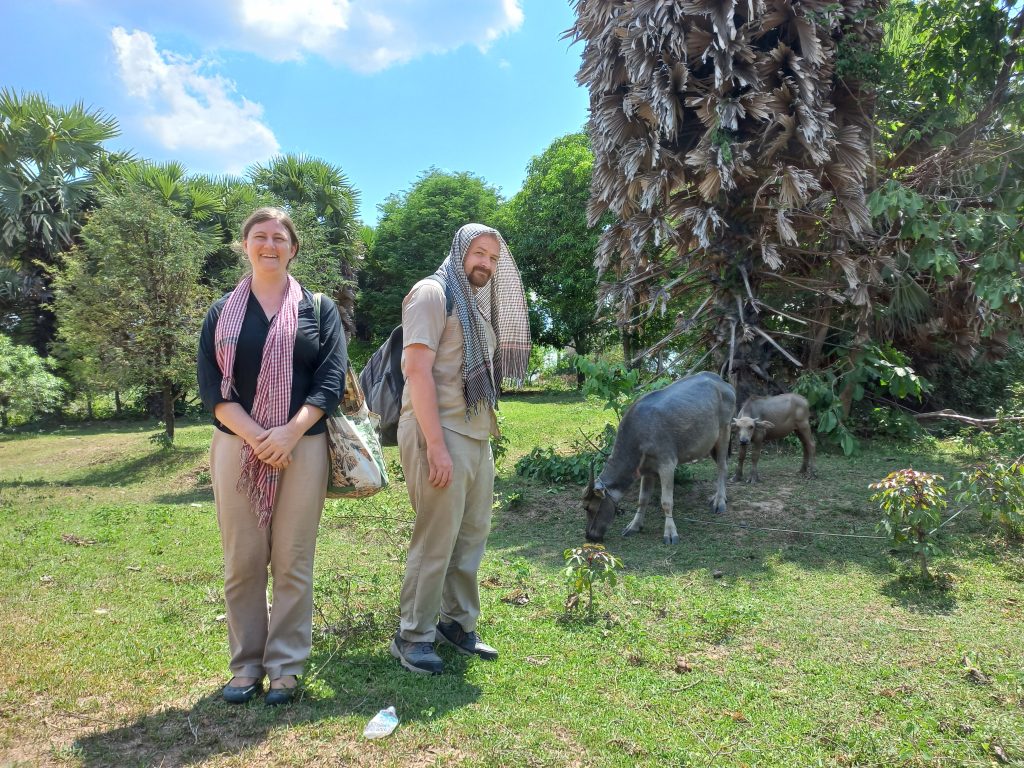
Crystal and I posing with water buffalo on a remote island upstream on the Mekong river. Even here there’s still single use plastic waste. Some of it is local, some of it floats downstream from China, Laos, and Thailand.
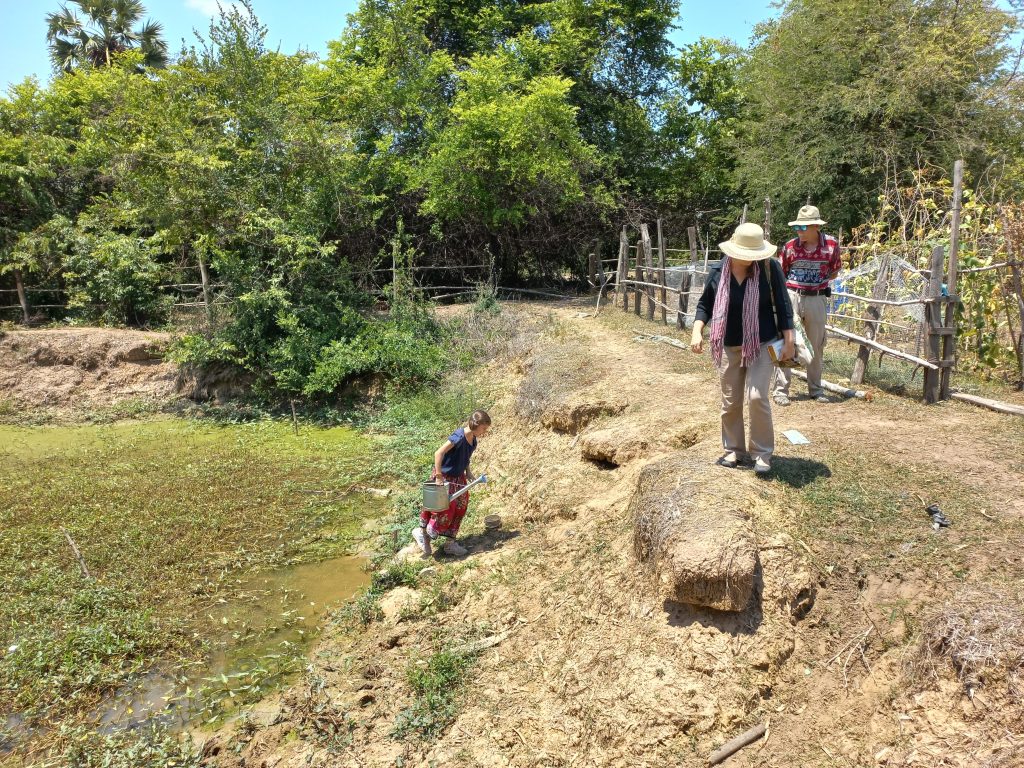
Charlotte trying out watering a vegetable garden at one of the farmers we visited. It’s difficult work with the little watering can but much easier and safer than climbing up and down the steep river bank to the Mekong river.
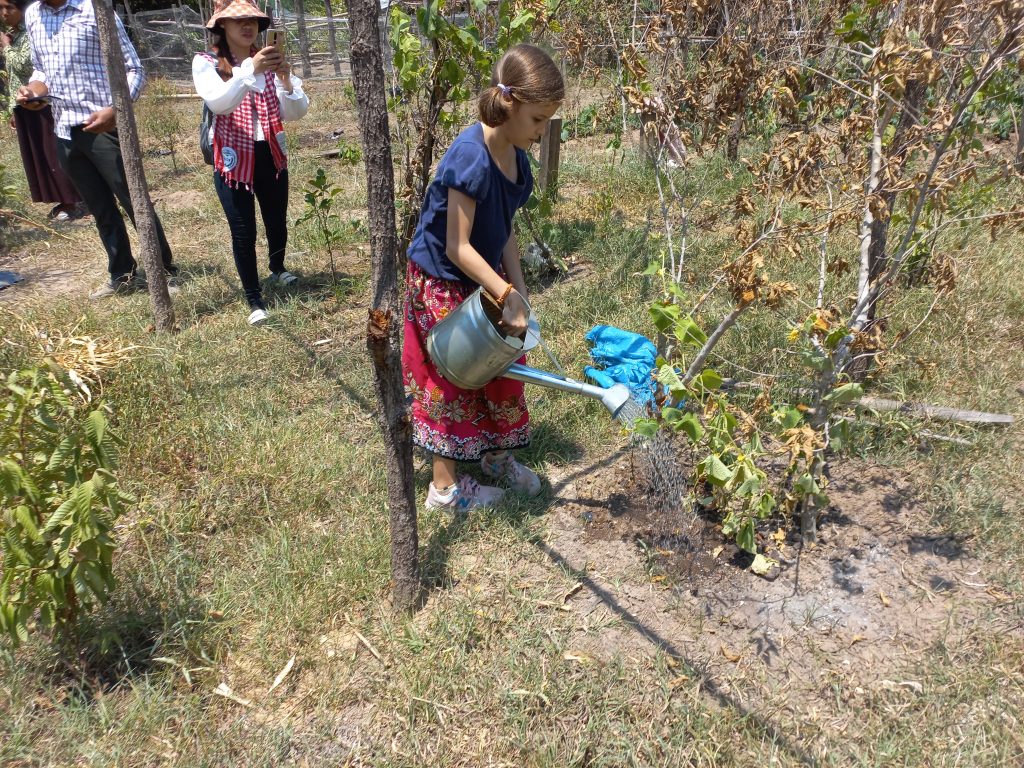
Counterintuitively, water access is a major issue for the families living on remote islands upstream on the Mekong river. The steep, uneven river banks make it difficult and dangerous to access river water. There’s also been a massive increase in pollution from further upstream making the river water increasingly unsafe. Drilling for groundwater is an option further from the river but it complicated closer to the river.

This project specifically works with poor farmers living in remote interethnic communities along the Mekong river. In Ratanakiri and Mondulkiri provinces, ethnic minorities still wear their traditional indigenous attire and speak their own languages. In Kratie, most of the ethnic minorities dress like Khmer people and speak the Khmer language. The only overt signs that they are not Khmer is that their homes do not have the ancestor shrines and that they have graves for their dead. Traditionally, Khmer cremate their dead and then place the ashes in stupas at pagodas.

Catherine visiting the poultry at one of the farms we visited.
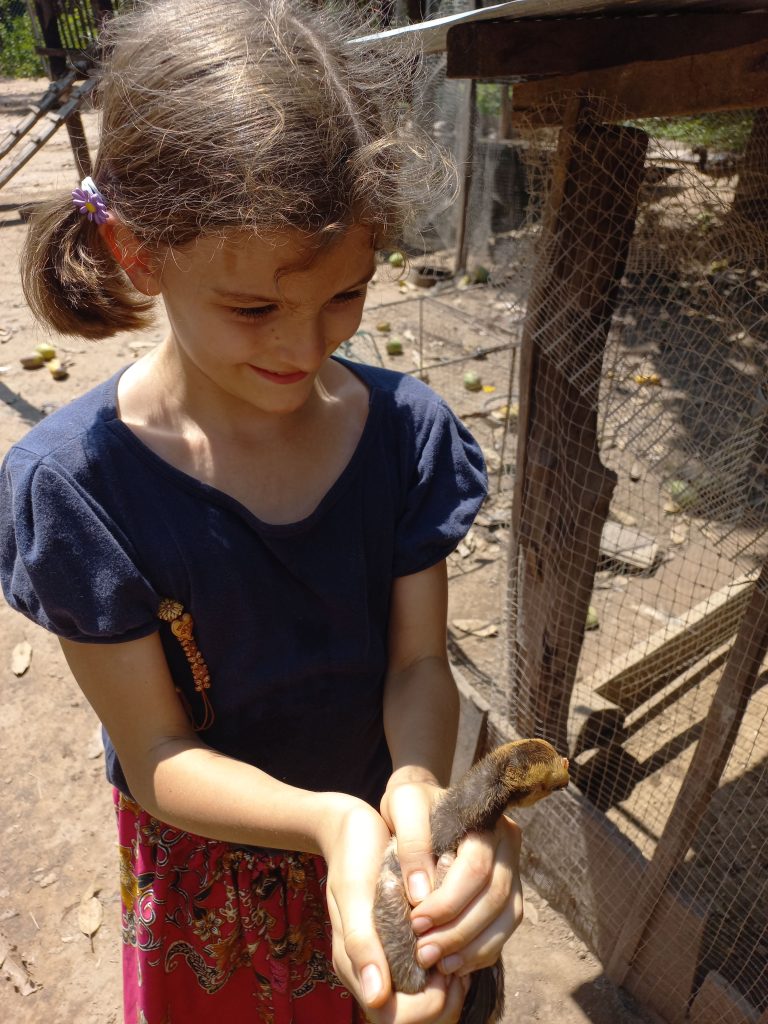
Charlotte holding a baby chick at one of the farms we visited. It reminded me of the Jim King and the Plains retreat.
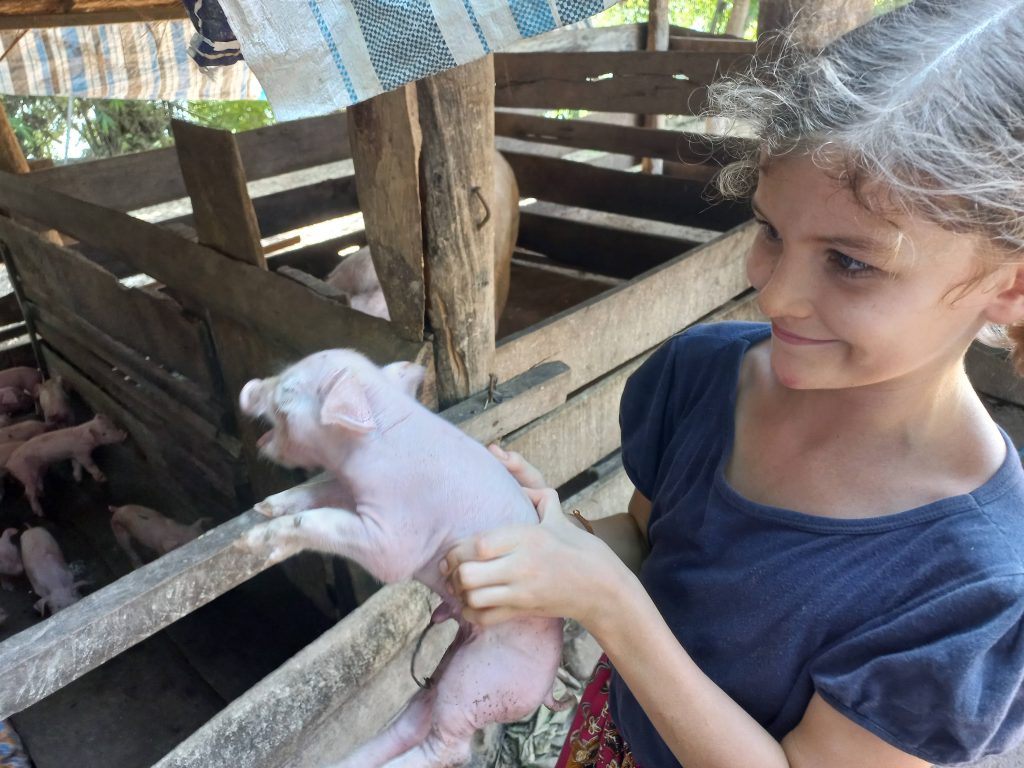
Charlotte holding a pig at one of the farms we visited. This reminded me of growing up on the farm and holding my first piglet.
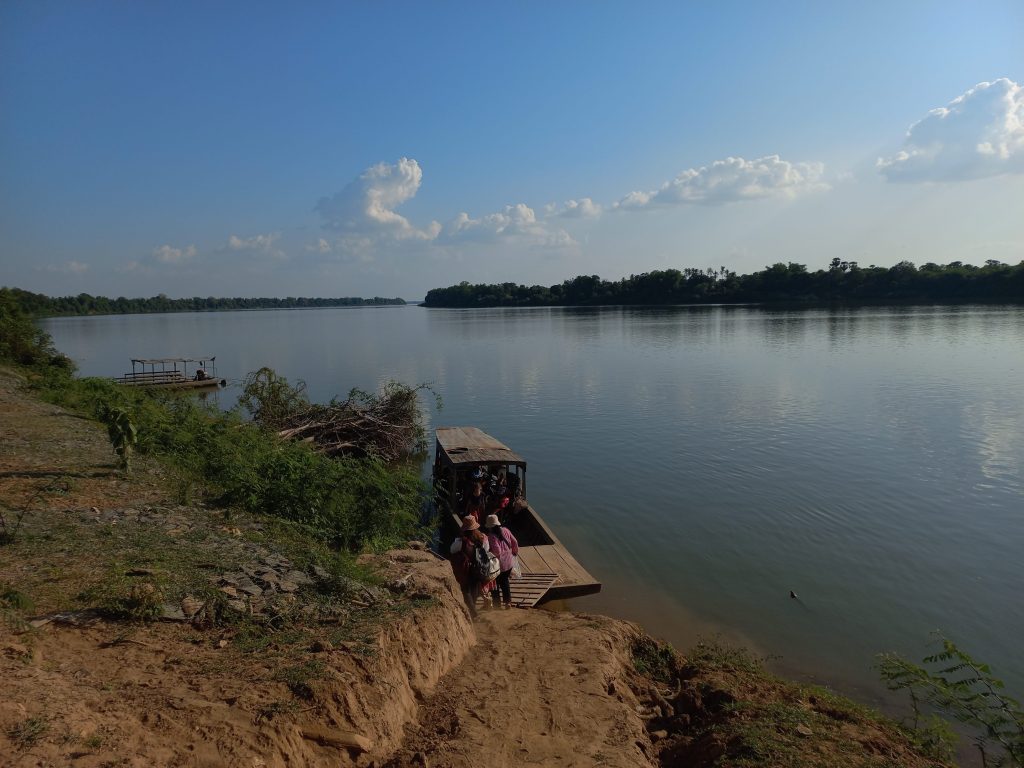
The ferry we took to the island where we spent the night. Our project supports two remote villages on this island.
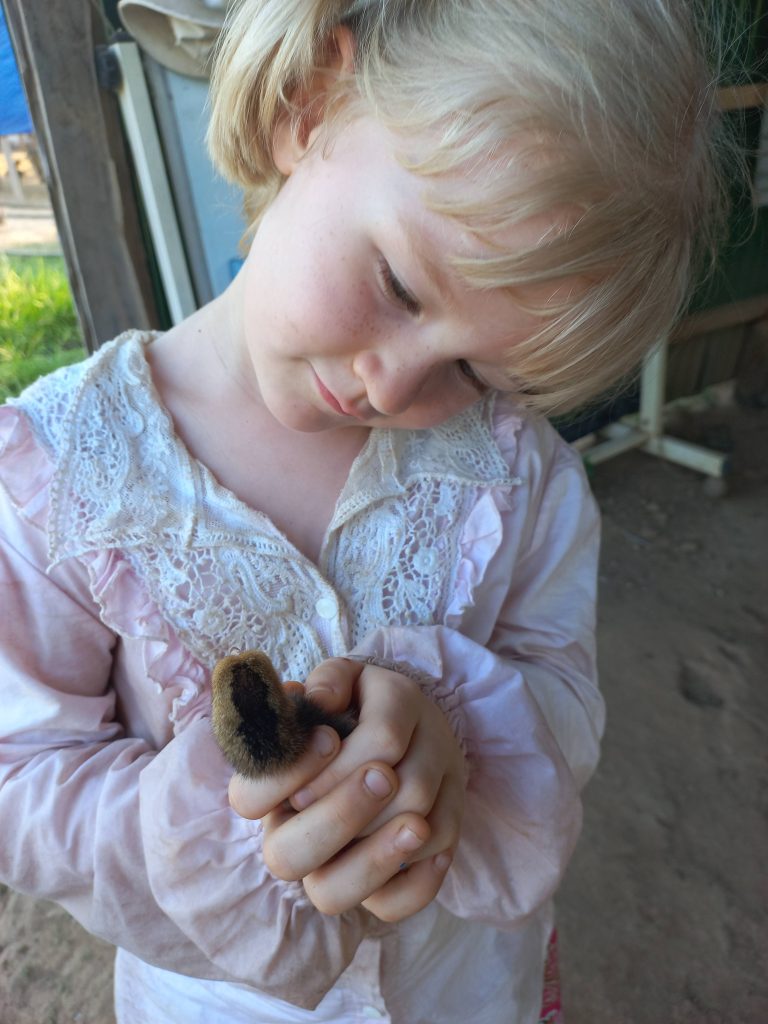
Catherine holding a chick at the Cambodian Rural Development Team’s model farm on one of the islands.
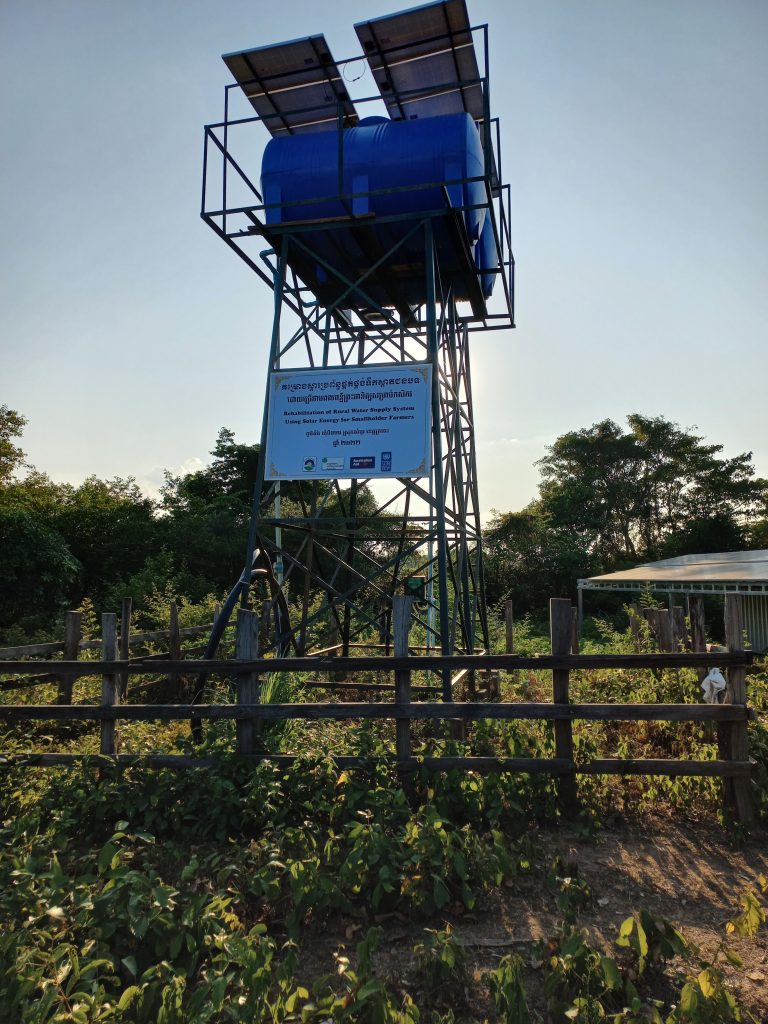
Our partner, the Cambodian Rural Development Team, built this solar powered water system with technical direction from Engineers without Borders. It pumps water from the Mekong river and stores it in the water tower, it then is gravity fed down to fifty households in a village on a remote island. There are plans to develop this into a sustainable local business so that maintenance and expansion can be carried forward locally.
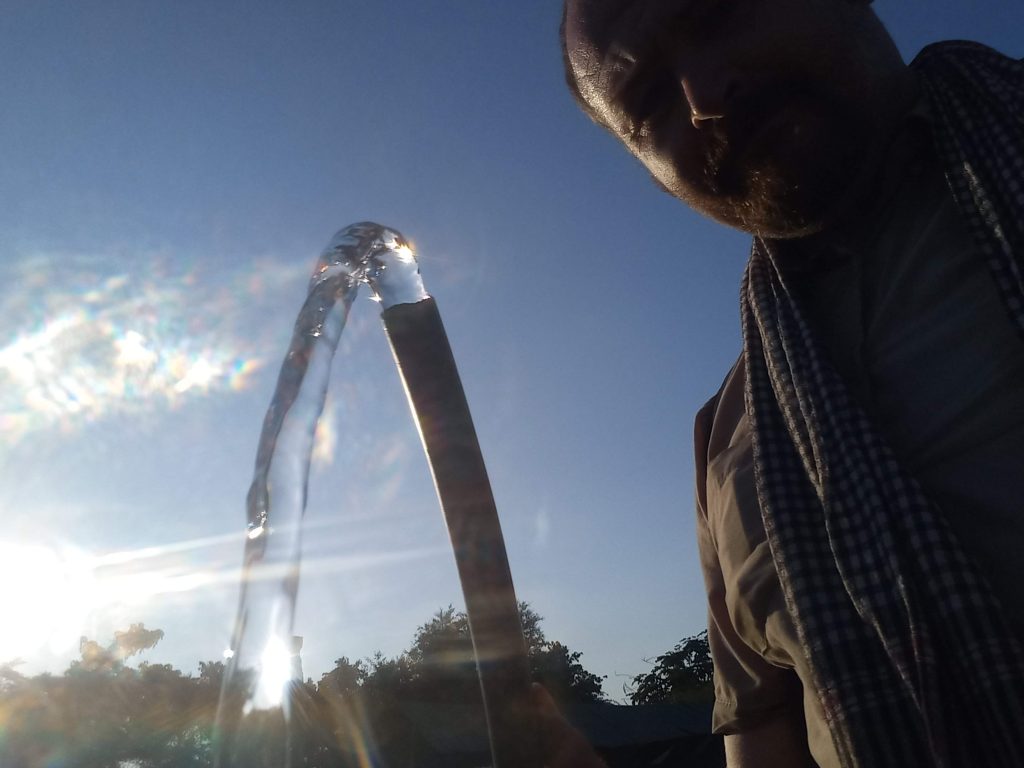
Running water is miraculous when you haven’t had it. Especially if you’ve had to climb down a steep river bank and carry it back bucket by bucket until now.
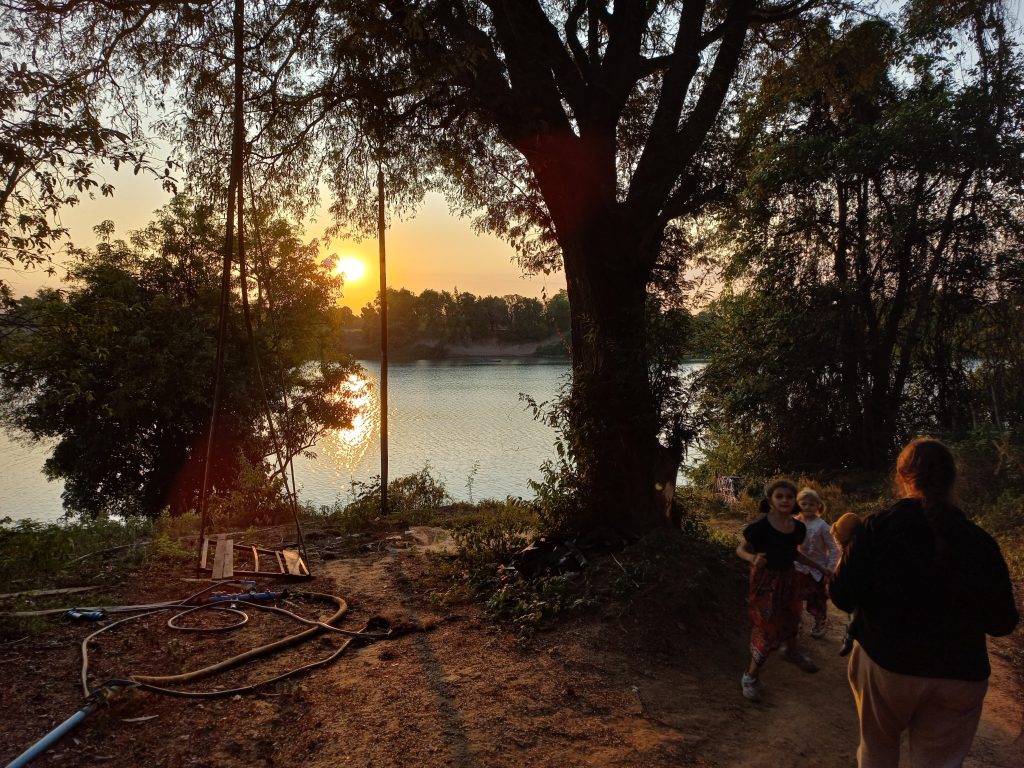
We spent the night on a remote island upstream on the Mekong river.
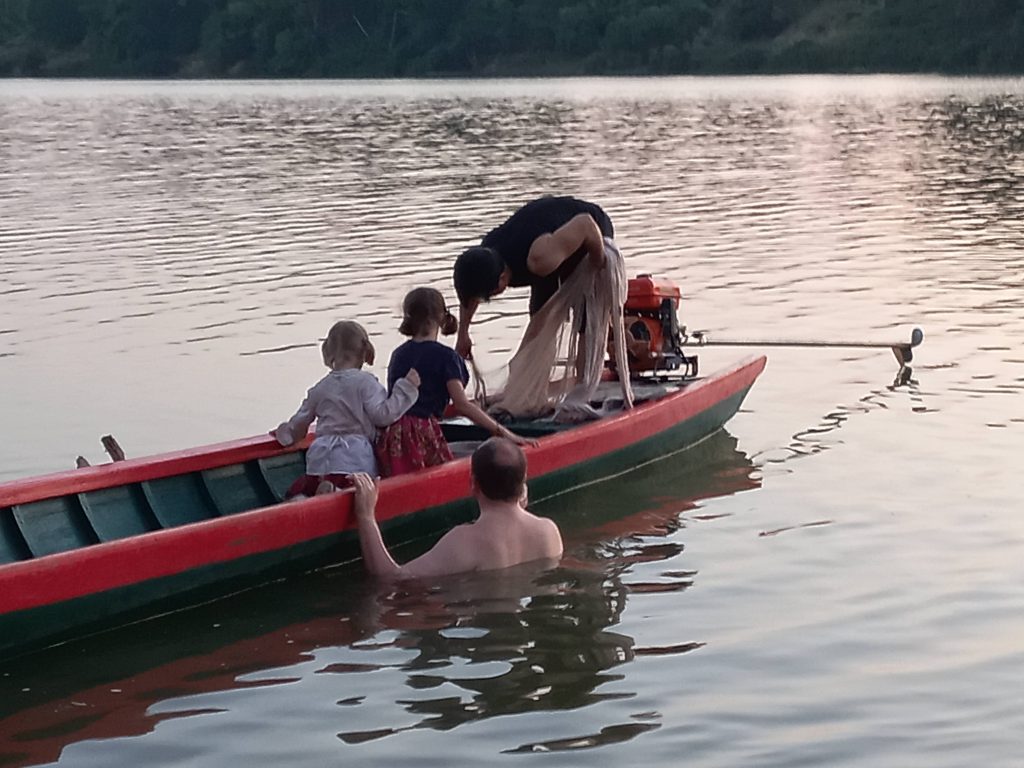
That evening the girls joined Mr. Vipou, from CRDT, in fishing for breakfast. The catch was small but very delicious.
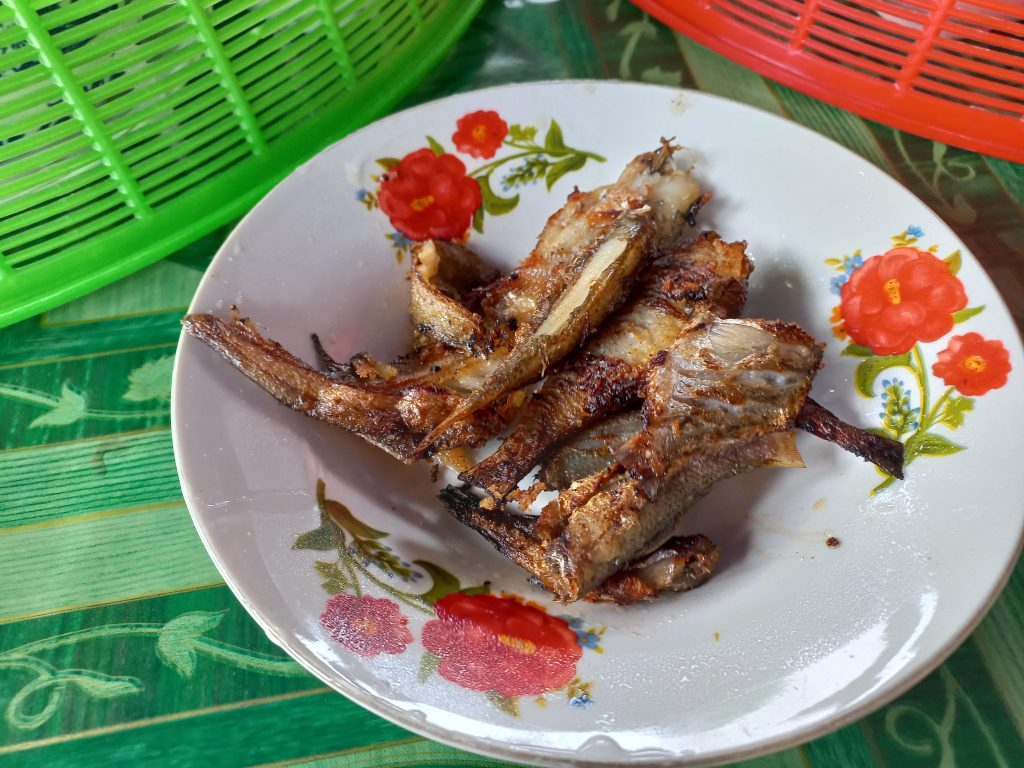
The evening’s catch fried up for breakfast. Unfortunately, fishstocks on the Mekong are dramatically down from even five years ago. We were in Sambour district. Sambour means ‘bountiful’ in Khmer and the district’s name came from the abundance of river fish. This dramatic decline in fish has caused new hardships for the subsistence farmers living on these islands.
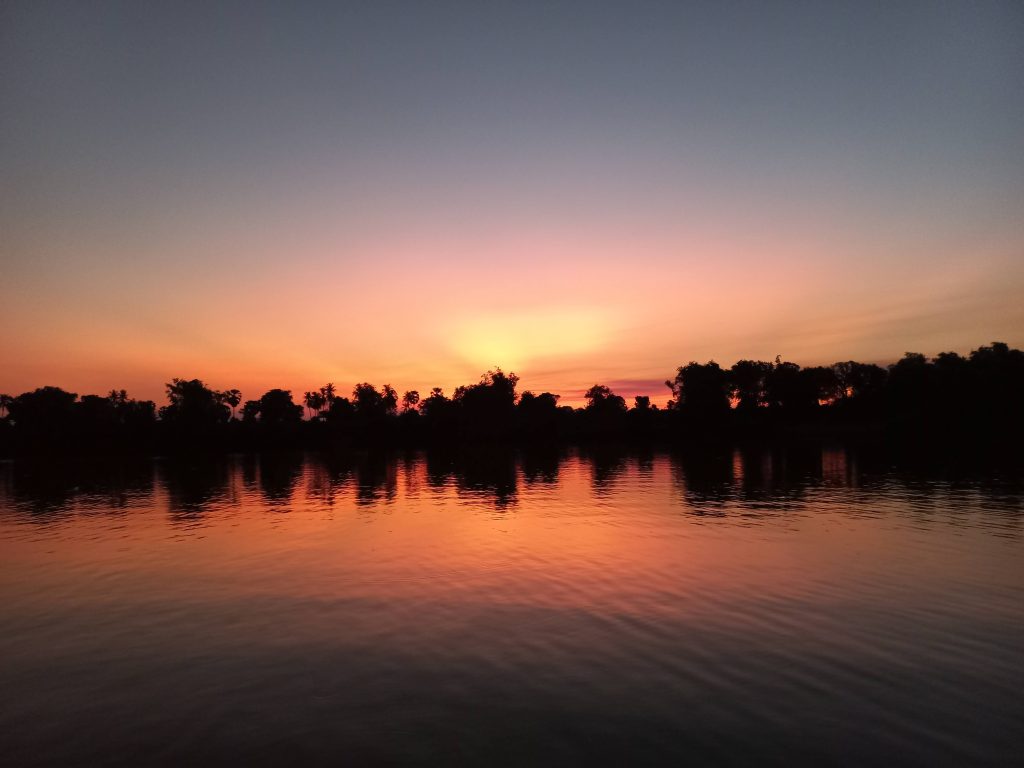
The sunset that we enjoyed during our stay in the village.
What an amazing adventure!!! So many interesting things. Grateful they have running water. Hopefully the fish will return and the pollution will decline. What a difference you guys are making in the world. Fabulous photos!!